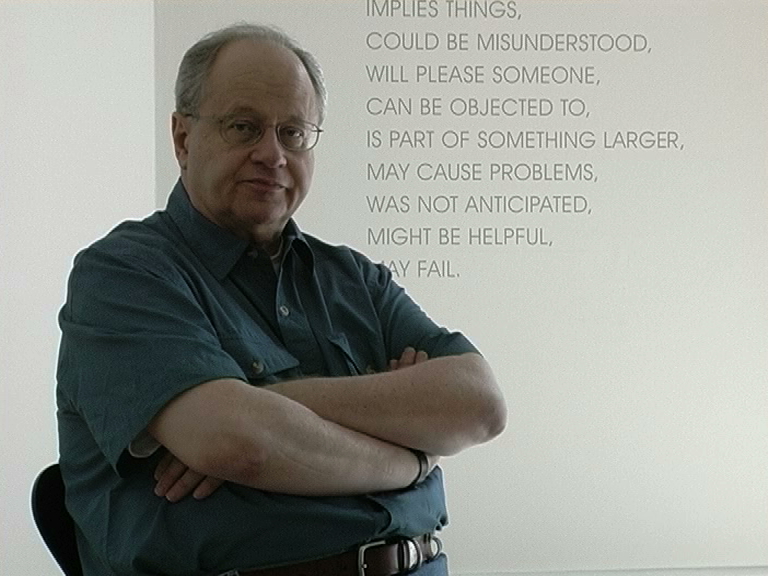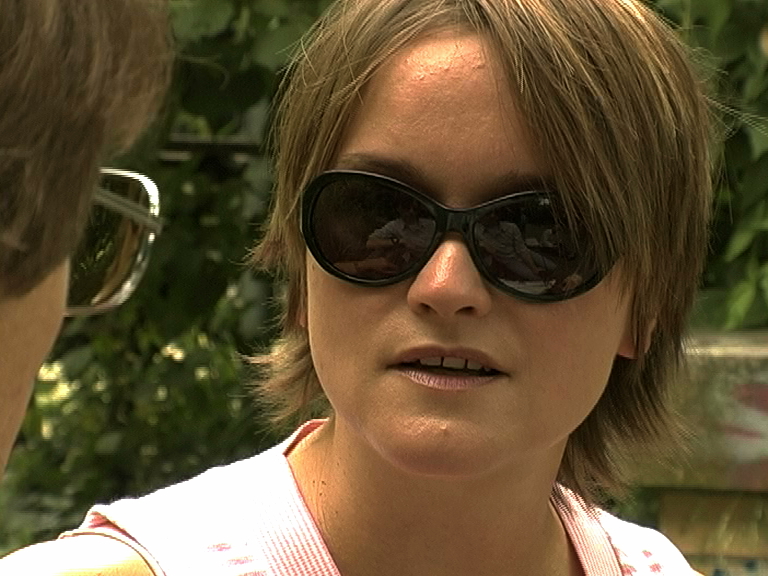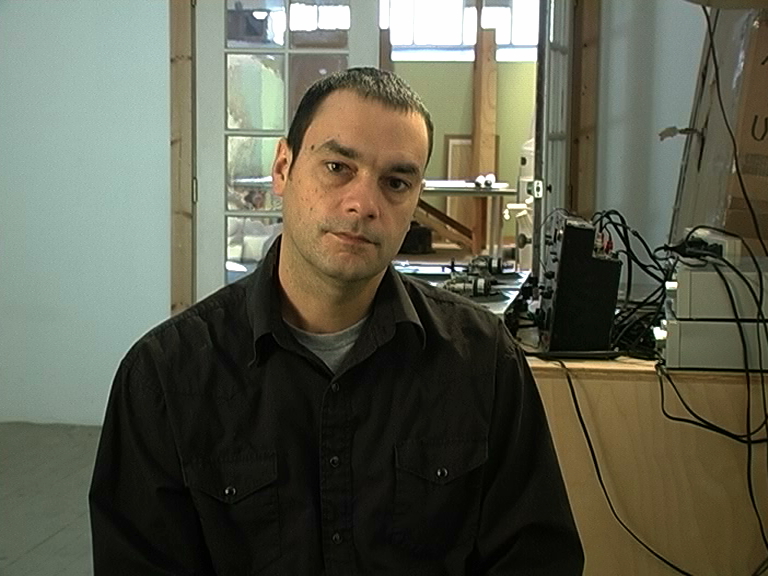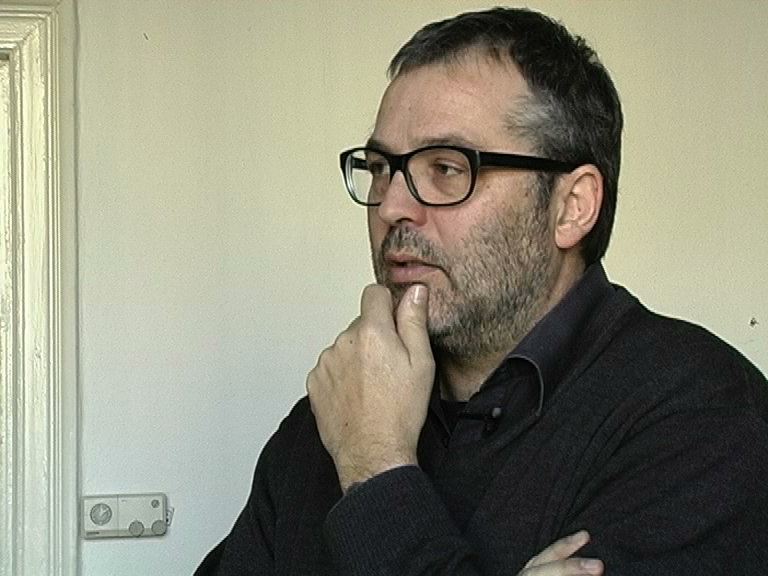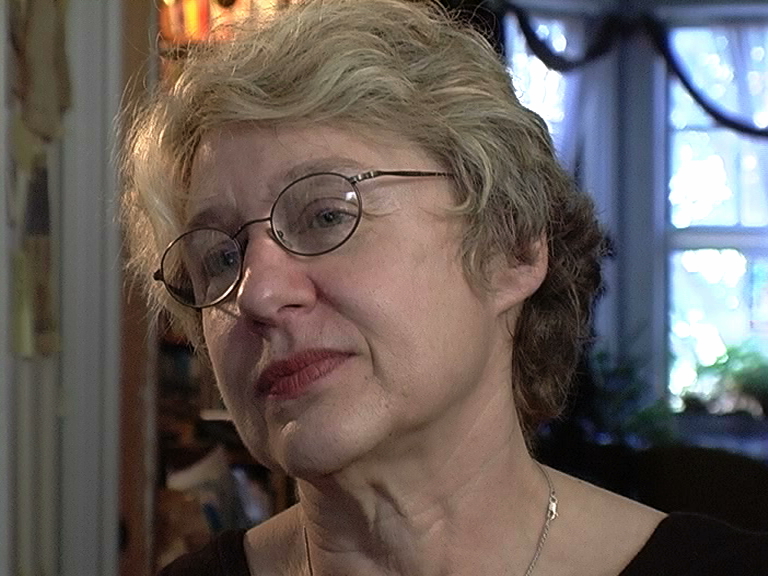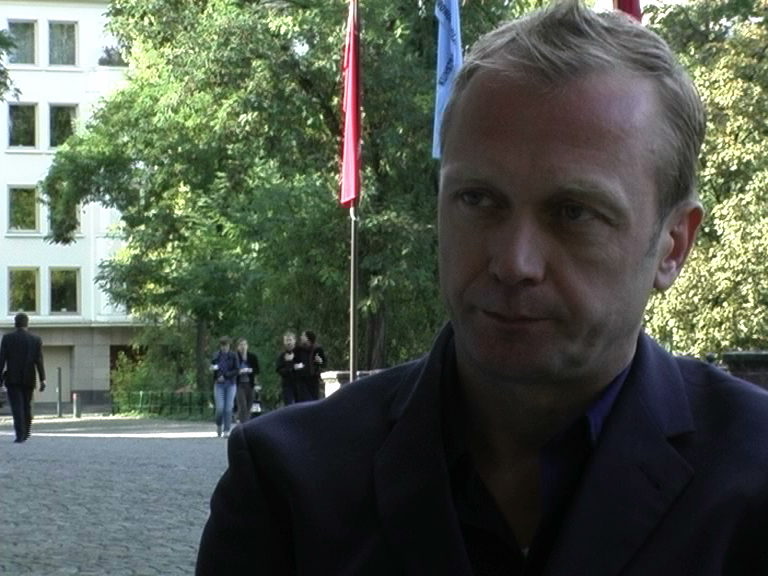S.R.: We have two parts, the first is more about your background and your approach; the second is more about historical questions, like influences. I come up with the first question: How do you see your own practice between writing and film or video?
G.B.: I do a number of things, and that includes making art, making films and videos, teaching, writing, and I don‘t assign any more or less importance to any one of those things. I like to approach my practice in a way that focuses on what I‘m doing at the moment. Right now what I’m doing is being interviewed and discussing Conceptual art with you, and this is my practice, this is what I’m doing; when I’m in the classroom, that’s my practice, when I’m writing that’s my practice. I’m much more comfortable when people ask me to identify what I do, I usually say I make videos, I write texts; I’m much more comfortable speaking in terms of verbs rather than saying, I’m a film maker, I’m a writer, I’m an artist. None of those names seem to capture everything that I do.

S.R.: Maybe this is a very specific definition of art practice. It would be interesting to have a little bit more of your background. How did you come to this specific kind of practice?
G.B.: I always wanted to be an artist. When I was very, very young I was most interested in being in the art rooms at school, and I was always painting, I was a childhood painter. I think I got that from my great-great-grandfather – since the generations in my family are very small. My mother was eighteen or so when she had me, and my grandmother was seventy – my great-grandfather was alive for the first few years of my life; he died when I was around five, but he was a very important figure in my family. He was a painter and a Socialist and a part of that generation of immigrant Jews who was politically progressive working class but also interested in culture. I think I inherited that. Throughout my childhood I was very much interested in painting, and read a lot. And then, as a teenager, I became very much interested in politics. That all seemed to combine into a set of desires that lead me to making art. But when I arrived in Manhattan, when I was eighteen, to art school, I was making paintings – and I’m still making paintings. I also came from a place where to be an artist meant to be a painter, and it wasn’t until I got to art school in Manhattan where I met many people who called themselves artists and were making art and were not painting. I was introduced to Conceptual art, to video artists at the School of Visual Arts […] in the early 80s. I got to the School of Visual Arts in 1983, and in the early 80s the School of Visual Arts was a place where a great many interesting people were teaching. Joseph Kosuth was teaching, I studied with Jack Goldstein, May Stevens. I encountered and studied with Craig Owens and Benjamin Buchloh who were teaching at the School of Visual Arts, and I also met colleagues, friends who are still very important people in my life like Andrea Fraser and Mark Dion and many others whose names you know […]. While at School of Visual Arts, I realized that I could be an artist or make art and not necessarily limit myself to the practice of painting, which in the end, though I’d been doing it all my life, didn’t really seem to suit my interests as much as working with language, and then working with time. When I first picked up a video camera […], I realized that I was very much interested in adding the element of time to my work in a way that one couldn’t possibly do if one was doing static work, making paintings or even photographs or even installations, all of which I tried to do, but there was something about working with the element in time, the way that video allowed one to do that excited me greatly, and I started making videos. In the mid-80s the AIDS crisis took a hold of Manhattan, and many people on the Lower East Side were getting ill, and I was living on the Lower East Side […], and being a young man in a largely but not entirely queer-, lesbian-, gay-, bisexual-experimenting context, community, also many of us were experimenting with drugs, and people started to get sick on the Lower East Side. That was the political context, the AIDS crisis was the political context in which I discovered video; the two things happened at the same time. I stopped painting, I started making videos and I was looking for a way to bring politics into my art work in a direct way, and the AIDS crisis was becoming rapidly politicised in the mid-80s. All that came together, and in some ways that explains my practice, that’s how I ended up doing what I’ve been doing for the past 15, 20 years. […].

S.R.: […] For me the interesting point is – and you already touched it a little bit – the interrelation between conceptual reflection on the representation system and then in the 80s as you figured it out by the AIDS crisis and other influences the issue of identity politics came very strongly into the artistic field. Maybe it’s interesting to hear a little bit more about this, how you experienced this and how you developed your position.
G.B.: The context of the AIDS crisis completely shaped my work and my life very specifically and dramatically. But I have to say my interest in politics predated the AIDS crisis. Mark Dion and I worked together on the Lower East Side with a group that was working in solidarity with the Nicaraguan revolution. We were very much interested in doing political work, and using our talents as artists, we idealized the Soviet model (smiles), Constructivism and Productivism, Productivism more specifically which we had actually been studying and hearing about through Benjamin Buchloh’s class at School of Visual Arts, as well as being influenced by Craig Owens‘ engagement with feminism and identity politics. We were trying, I was trying to find a way to bring my work directly into contact with social movements for change before the AIDS crisis. The AIDS crisis happened and I was already pre-disposed to moving my work in that direction. I was dissatisfied to talk to Mark about this, I have talked about it to him a long time, but I was very dissatisfied with the abstract nature of the political work I was doing and the way I couldn’t really bring formal experimentation into that context. When I say that we did Nicaraguan solidarity work, we were basically making the posters (smiles) […], there was not much room for the kind of formal interrogation I was very much interested in as well. Although it seems very abstract, I was living in a Spanish-speaking neighborhood, yet I was doing political work about a place in Central America that was very far away and of a different culture than my Puerto-Rican neighborhood […]. I tried to do political work, and also be in contact with the people around me, but in fact, the work that I was doing wasn’t really bringing me in direct contact with my neighbors and friends in the Lower East Side. The AIDS crisis arose and posed a challenge to meet, which was a challenge I was ready to meet, which was to do work that was directly responding to something that was happening to all of us. But you asked a slightly different question. There are different tendencies within the history of art that I identified with that made this leap possible. I was very much interested in historical Conceptual art, I was Joseph Kosuth’s assistant in the mid-80s, from 1983 to 1985. That was part of my interest and love of art and the history of art, and my work at that time and my studying with Kosuth was very much about furthering art, and I‘ve never let go of my preoccupations with the language and discourse in the history of art, but I’ve always felt that the language history in the discourse of art were shaped and advanced – there can be an advance – through its engagement with larger history. There was a certain kind of hermeticism, a sealed-off nature of gallery Conceptual art that lead me to look to models such as Martha Rosler and Adrian Piper and then most significant for me Yvonne Rainer. Yvonne Rainer is probably the most significant and largest influence on my work and my thinking about my work. I saw “Journeys from Berlin” in the mid-80s and I saw “The Man Who Envied Women” also in the 80s, and Yvonne’s capaciousness, the way that she can brace everything within the scope of a film and not let go of her formal interrogation; how she could be experimental at the level of representation and at the same time directly engaged with what‘s going on around her in her world was hugely influential on me. Basically I just tried to do that; my first video is (…) the videotape of a young bisexual man caught in the AIDS crisis trying to do a Martha Rosler videotape about some aspect of a shared lifestyle (smiles). If you see it, it’s deeply indebted to Martha Rosler’s “Vital Statistics of a Citizen Simply Obtained” – it’s a combination of that and Yvonne’s work […]. I’m not embarrassed (smiles), I am not embarrassed, but you can see if you look on my first tape it is me just attempting to try to do what the models I adopted were doing (nods).
S.R.: What is of special interest for me is this relationship between the identity politics in art with the aspect of the public, the public sphere to come back to the question […] for me the high interest is this relation, this way from identity politics through public sphere and the other way, identity politics is not thinkable without the public sphere […]. Now you explained in an understandable way how you came from political involvement to identity politics and reflections on the representation system and things like that. Maybe you can say a little bit about the public sphere. How do you project – as an artist – how do you project this public sphere? Or how are you participating?
G.B.: I got my understanding of the way the artist fits into the public sphere through Yvonne Rainer; she said: I only talk about the personal insofar as it’s social as it’s political (smiles). I was very influenced by that early on. I don’t think of myself as separate from the public sphere […], rather as approaching the public sphere. All I have to do is think about my own life and my own daily encounters and engagements, and I’m already in the space of the public sphere (smiles) and I don’t keep that out of my art basically. Instead of (…) all I have to do to be in the public sphere is make an effort not to exclude the social from my account of my life. I’m very much an autobiographical artist although I… because I’m also an artist who is influenced by Modernism. I’m interested in telling my own story as long as I’m able to tell other people’s stories as my own. It’s about ownership. My story is not my story, my story is the story of someone that’s being lived out in a way that many other people are living it out. I don’t see it as a entirely unique articulation; I think there are things that are singular about my life as there are things that are singular about everyone’s life, but I also think that there is an enormous portion of my life that’s lived in the way that thousands of people are living it. I focus on that largely when I’m doing my autobiographical work. I think identity politics would seem like it would be unthinkable in the context of Conceptual art, but what I’ve always done is try to productively bring opposites into contact with each other so that they notify each other. Conceptual art and all of the theoretical underpinnings of it – language theory, the preoccupation with Wittgenstein – helped me to understand what it means to say, I am gay, I am a person with AIDS. I understood through my theoretical studies and also through looking at people like Martha Rosler, Adrian Piper and others and Yvonne, that to identify as something was to merely occupy a place in language for moment. I understood that it didn’t refer to something essential in me necessarily it was a place from which to speak. And if you look at my work, all of the identifications in my work are about an endless chain of substitutions of identities. I’m very interested in identifying as something in order to burden it and destroy it to some extent as an identity. I understand it as a vehicle perhaps; an identity could be a vehicle for a flight toward liberation, and I understand how temporary, how ephemeral that is. And I understood that because of my understanding of language through Conceptual art. I’m very interested in bringing… Another aspect of the autobiographical in my work is to – when I’m out in the world doing politics as an activist or an organizer – I try to bring what I know about representation and language theory directly into that work; or when I’m in the art world or at a screening or teaching, teaching is where a lot of it happens […]. I bring all of that experience of my life and the various identities I have into that as well; I try to break down the borders.

S.R.: One more theoretical question; (…) Michel Foucault was coming to specific points, I mean he was thinking, writing and working for a very long time on the so-called panoptic system in which we are involved, in which we are included. Would you say that the concept of the panoptic system itself and how we understand it changed through all the discussions from the beginning of the 80s with the AIDS crisis in the middle of the 80s? Do you think there was a change in this panoptic system, how it is reflected, how it is working in ourselves?
G.B.: Sure, I think there has been an intensification of surveillance and all of the disciplinary functions that Foucault pointed out. But I like to address… I answer your question in a different way. I think there has been an intensification of surveillance in our lives and I think the disciplinary functions of that surveillance has also increased and become more effective (…) but when you talk about Foucault, I also think about his practice and how it was profoundly influential on AIDS activists. When you read Foucault in the 80s, me and my friend Ray Navarro, a friend of mine who was in the Whitney Program in the late 80s and he died of AIDS in ‘91, who was on of my closest friends, we read Foucault in the 80s and thought about how it related to our AIDS activism; we were very interested in how Foucault went into the prisons and asked prisoners what a prison should look like, how he went into mental institutions and asked patients what an institution should look like. That directly influenced our position on how people with AIDS should be directly in control of the research agenda and the ways in which we were cared for. One of the great contributions that AIDS activism made certainly to US politics if not to politics elsewhere was the recognition of people with AIDS and people with a disease in general as a class of people that have rights, as a class of people that should play a determining role in their future. We got that directly from reading Foucault. We understood the power move; we understand how to empower ourselves as subjects of a disciplinary surveillance. By reading Foucault, we understood we were captured by the medical gaze. And we understood what to do in order to seize power in the face of that. That’s what we got from Foucault.
S.R.: So I think we will move a little bit to the historcial part. Maybe we could keep this window open, what you talked about and have it in the background or sth. like a thread. […] What do you consider as your strongest influence (…) in general?
G.B.: That’s very hard to say what my strongest influence is. Once again I state that Yvonne Rainer’s work and studying with Yvonne had the most significant and profound influence on my work. But I, as either a child of post-modernism or popular culture, I draw influences from every direction, I try to absorb as much as I can, I grew up watching as much TV as much as was humanly possible; I’m a working class kid; I didn’t know a lot about art, my parents were working people, they didn’t go to museums and still don’t go to galleries unless I have a show. I didn’t really know about the art world until I went to art school. So my influences are popular culture, TV, reading. I have to say I have a sustained interest in philosophy and theology, which is enormously productive for me in relationship to my writing and my work. But also I have to say my friends … Mark, my ideas and where I am, my thinking in relationship to the practices of people like Andrea Fraser, Mark Dion and film makers, video makers like Isaac Julian, Todd Haynes. I’m not necessarily close to or know Todd or Isaac the way I know Mark and Andrea, but those are people who I’ve followed and whose work I’ve been aware of since I’ve been making work. In some ways I also look at those practices and relate them to where I am in my work as well. (…) The other thing I have to say is studying at the School of Visual Arts, there I was deeply influenced by studying with Craig Owens, and my exposure to Craig Owens’s ideas in the early 80s on post-modernism really shaped my understanding of the historical context of my work.
S.R.: […] Can you focus on something like a goal or an aim of your practice or do you see it more in a post-modern sense that it’s the process going on and it depends which positions you are going to construct in this process?
G.B.: The goal of my work is self-determination, which, as a goal, recognizes a process, but it’s a goal nonetheless. I’m interested in maximizing the amounts of agency I can have as a creative worker, and my work is organized around that aim. That aim captures many things then. The topics of my work vary hugely. My collected writings are coming out this fall; in December, MIT is bringing out my writings from 1986 to 2003. In the process of putting the book together I was a bit worried because the topics are everywhere: there is fiction, theoretical writings, critical writings, some about art, some only about AIDS politics, some about ideas that are in many ways not specific or identifiable; they are about feelings. (smiles) I realized that my project has a bit more coherence than I thought it did; I wanted to be very eclectic; I really wanted to be one of these artists whose work looked radically different from project to project, from article to article, and to some extent that’s true. But […] there’s a lot more consistency in the approach than I expected to see, and there’s also many preoccupations that are similar form piece to piece. The abiding, the one consistent approach would be autobiography as I define it, which is not necessarily only about me, but stories of the self. The other consistent thread in my work is a commitment to self-determination and a notion of liberation… I’m always embarrassed to admit to you, to say that word “liberation” now – in the 80s I wouldn’t have – for some reason the context of the moment makes one feel somewhat embarrassed to say, to make such a large claim for one’s work but that’s the concept to which I’m committed.
S.R.: Maybe you already gave us specifically here in our talk a lot of perspectives to figure out conceptual paradigms, which are still working in different continuities and in different contexts. But do you think that there was a break in the tradition of artistic production in the 60s through Pop art, Minimal art and of course Conceptual art, would you see that the paradigms are still in function or do you think that the paradigms have to be renewed in different time circles?
G.B.: I think what’s more visible now are the social forces at work that produced the changes in art. If one looks at the history of Minimalism and Conceptual art from the current historical vantage, one can see that shifts in modes of production were greatly affecting the way that artists thought about their work in the same ways that any other workers in society had to face these changes. What you see in Conceptual art and through its variety of advances over the past 20 years is the entrance and recognition of post-Fordism in the art world. The move from a kind of factory model to the globalized network society production model that’s in place now; one that emphasizes information and information technology, one that emphasizes the decentralized nature of production, the regime of just-in-time production […], decentred forms of distribution, the elevation of information to the status of commodity – you see all of these things happening within the modes of production on a global scale. When you look back at art you see in fact that the artists were trying to deal with this; look at the way that many artists work now, look at the way in which video art has become one of the major ways of making art in the art world; it’s very much like a post-Fordist way of working. You produce a DVD the substance of which is really Zeros and Ones – information, that’s what the commodity that’s been bought; it’s shipped and often installed just in time for reception, and it is installed using, relying on all ready-made, prefabricated technologies: the video projector, the screen, in various kinds of arrangements but nonetheless it’s a kind of standardized, bureaucratized, post-assembly line production. I think artists today and using the antecedents of Conceptual art figured out how to be post-Fordist artists basically. Does that make sense? // Sure, sure! // I have to look at it that way now since I teach that work and I’m also very much interested in social theory, I’ve read Negri and Hardt, Manuel Castells, Frederic Jameson and many other theorists who’ve tried to deal with globalization. And very much this is how I see what Rosalind Krauss called the “Post-medium condition” I think is an aesthetization of post-Fordism.
S.R.: I mean, I know this text about Broodthaers and there are some points I don’t agree with Rosalind Krauss but the term is interesting. There is only one more question left on my list […]. What is your ideal typical daily work as an artist? […]
G.B.: What I’m doing when I’m doing it is what I do.
S.R.: You don’t want to add anything?
G.B.: I wake up early now; I’m not a night-person any more, I’ve just turned 40. I wake up early, I read for 2 hours, go to school, I teach. When I’m not teaching, I’m reading or writing. Sometimes I’m shooting when I’m working on a documentary project. I go out every day and I really try (…) to approach my life as though my life is continuous with my work, and I’m often upset or annoyed when I’m alienated from my life through my work. This goes back to the aim or ideal of self-determination. I try as much as possible to be fully engaged with what I’m doing at the moment as a matter of choice. Of course I can’t achieve that of course I live an alienated life like most people. I very much take seriously the Avant-garde ideal of merging art with life which I’m now beginning to see as highly complicated and problematic because I think that art did merge with life in the form of someone like Mark Stewart (…) or that capitalism did merge with life, merge creativity with daily life for the purpose of profit in a way that the avant-gardists didn’t anticipate. I’m aware when I say that I want to merge art with life that aesthetics and daily life are brought together daily through capitalism. I’m trying to be something different that’s not organized around consumption, that’s not organized around me producing wealth for others by buying things daily; it’s about knowledge acquisition and not information consumption. That sounds a bit pretentious, but I actually like pretension. I think we should live our lives a little ambitiously. I guess that’s what I’m saying. (laughs)
S.R.: Sure, sure to some extent of course. I think that was the set of questions I had. But if you want to add sth., if you want to focus on a specific other thing that was not in our talk, take your time to reflect on it…
G.B.: It’s a number of things that we talked about earlier that I think maybe you have questions in response to some things I am about to say. What interests me now is to think about my engagement with Conceptual art and its influence on me but also my distance from it. I feel distant from Conceptual art. Conceptual art is a historical movement to me a set of ideas that has become somewhat standardized, canonical and received. I think it’s very important, and I teach it, talk about it with my student, and I think to some extent the methodologies and aspirations continue in many practices. But I know that the conceptual tendencies continued by challenging them, e.g. I‘m very much interested in affect, in feelings and I think in Conceptual art, because of its idealization of science, it excluded a discussion and recognition of affects. But you can see in work like Martha Rosler’s work and Adrian Piper’s work and Yvonne Rainer’s work that in fact, because of their political commitments, their feminist commitments, affects weren’t excluded, the production of feeling wasn’t excluded from their analysis. I’m very interested in that, and how the idealization of science in the late 60s and the embrace of Structuralism excluded a thinking about the production of affects and feeling in society. I think about it as a documentarian I’m very interested in that too, I also come from the Left; in the 80s, when I was thinking about making my first documentaries, I realized that the only emotion I was allowed to show on the Left was anger; anger was the validated and authentic emotion, and any other emotion was suspect of manipulation. You were suspicious if you were producing any other emotion other than anger in a Left documentary (smiles). […] I also still see going on now and maybe even intensifying what I studied in school as the Benjamin-Adorno debate, the Brecht-Adorno debate via Benjamin (0:43:26:24). I recently wrote an article about this in Artforum when I compared the work of Critical Art Ensemble with the work of Andrea Fraser which I really see as a reduplication of two polarities: the autonomous work of art on the one hand in the instance of A. Fraser’s work, and the Brechtian approach, engagement outside the institutions and engagement with the popular in the Critical Art Ensemble work. I still see these two poles charged in a way that they oppose each other, and I would still like to defeat that opposition. Conceptual art gave us a way to try to defeat that opposition by de-aesthetisizing the work of art by putting it into language, by many artists going outside of the gallery and trying to produce statements that had relevance in contexts other than the art world. But still, at that moment, now when you talked about the panoptic, I don’t know if it’s related to the kind of disciplinary regimes of the market or not, but I think that the kind of Adorno-Brecht debate is still very much alive, at least here in the States, and I would like to see that consciously taken up. I wonder why we are caught or captured in this vicious circle; what are the forces that capture us in this vicious circle. Am I making sense? I’m trying to…

S.R.: Yes, for me the experience in the 80s, when I started to get involved in political activities and there was a continuity in the beginning of the 90s, there was exactly this loss of emotional engagement outside of anger as you said. But the interesting was that also in the Left practice of culture or art there has been this stereotypical perspective that Conceptual art is without emotions, is without a daily life practice, is without e.g. the personal relation between us sitting here, something like that. It was conceived as very cool, cold and cool. In Germany it changed in the middle of the 90s specifically with the reception of an exhibition of Roberrt Mangold’s photos of Yvonne Rainer and Martha Rosler […] There was a big discussion coming up including also the practice of some gay artists; they […] started painting in a totally different way. It was like a splitting but in another way it was a parallel working. It was a very difficult discussion in the 90s in my experience involving artistic strategies, which are strongly investing in aesthetisized strategies in relation to pure announcements and statements that were copied and then put on the wall. I can follow your ideas of the last 15, 20 years. I think there are some relations between Europe and the US. I’m not sure if this problem is solved, if this problem of the conceptual has a different consistency or has it just disappeared because some of the artistic strategies you see in the institutions are at a first glance very strongly involved in a conceptual reflection but if you go into the issue you see that often it’s just the surface, It’s just sth. like an appropriation of visual strategy to bring sth. But for me often the difference is […] that the philosophical or the approach of the critical culture like e.g. Kosuth or Barry or whatever they all taught with Wittgenstein and some other philosophers. This is the difference for me when I see just a work that is graphically working with visual strategies, which can be very easily related to Conceptual art but there is no consistency, no connection, and often the political issue is totally excluded.
G.B.: I completely agree, and I think there are different Conceptual arts, and Conceptual art is understood according to the context of its study. I think of the affect and emotionality of Vito Acconci’s work I also think about Beuys‘ direct engagement with others, which was influential. But in the States in the late 70s and early 80s, the Conceptual art that I tended to focus on was work that was anti-aesthetic in form. Even though I was interested in Feminist practices I was interested in work that resisted aestheticization, romanticism. This had very much to do with the rise of Neo-Expressionism in the late 70s and early 80s, and which we saw completely as a Reagan-era art work; very conservative, market-driven art work. But that created a kind of polemic where we eschewed anything hot, we avoided anything hot, anything emotional, and we looked to Conceptual art for its anti-aesthetic possibilities. We understood that even the Metro Pictures artists which were the artists we were most interested in at the time because they were our teachers – Jack Goldstein and Robert Longo, Cindy Sherman – these were the folks that were in the galleries in the early 80s who I looked to and was very interested in. They were also appropriating a kind of cold affect, dispassionate, distanced to counter the emotionalism of Neo-Expressionist work. I think if anything now, I’m thinking about ways in which to get outside of this polemic, this trap. And I even think that now when I was studying with Kosuth I understood – I looked at that work but I never thought it was cold – I understood its commitments and relationship to political practice. Through working with Kosuth was enormously influential because I had access to his library. I could read issues of Art & Language and there were alongside books: Marx, Wittgenstein, Althusser. It was very clear, the political commitments at the center of that work. When I look back at the historicization of a lot of Conceptual art, it doesn‘t necessarily seem to me to be anchored in that set of political or philosophical commitments. That’s something that needs to be addressed. But also I think in looking back at those periods it’s very important to understand the entire social context and the affective field, the fields of affects and emotions out of which that work arose. Anyway I’m finished. […]
S.R. I think it was very precise and very to the point.











